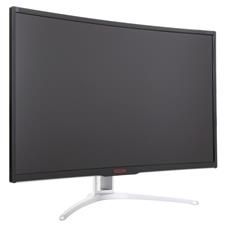Home Buyers Guide
What to consider:
● The programs you plan to use on a day to day basis should be the guiding factor in your purchase of a home computer.
● If you only need to browse the net, send the occasional email and use simple programs such as Microsoft Word, an entry-level computer or laptop should suffice for the average person.
● If you are looking to use more complex and intensive programs such as photo or video editing softwares, this will require better hardware. Look for a mid to high-level computer or laptop with more ram (8gb minimum), a mid tier CPU such as an Intel Core i5 and a graphics card (for games, video editing, graphics design).
Deciding between a desktop computer and a laptop:
● Desktop computers are more suited for home office set-ups with lots of space, as they can be bulky, heavy and not very portable. A home office set-up will require space for a desk, monitors, keyboard, mouse and desktop.
● Desktop computers are easy to upgrade when needed or parts replaced if they fail. Nearly every part of a desktop can be replaced with relative ease.
● Laptops are more suited for people who wish to have a more portable set-up, allowing you to work or browse on the move. Laptops also take up a lot less space than a full home office set-up.
● High-end laptops are generally a bit more expensive than a high-end desktop computer when comparing similar models and hardware.
● Laptops are not easily upgradeable or replaceable compared to desktop computers. The main parts that you are able to change and replace in a laptop include RAM, storage and battery.
Which CPU should you choose?
● The two major manufacturers of CPUs are currently Intel with their Intel Core selection and AMD with their Ryzen selection. Both companies currently offer great options to suit any workload and have models to suit any budget.
● Intel Core i3 and Ryzen 3 are the introductory models and are suited for simple workstations that are affordable. These CPUs may begin to struggle if doing more than web browsing, emailing and running simple office suite programs. They are generally not ideal at running all these programs at the same time and therefore may limit multitasking ability and productivity.
● Intel Core i5 and Ryzen 5 are the mid-range options and offer good performance in most situations. They will typically allow you to run multiple programs at once and therefore allow for more productivity when compared to the Core i3 and Ryzen 3.
● Intel Core i7 and Ryzen 7 typically have better performance than the Intel Core i5 and Ryzen 5 due to more cores and a higher clock speed. They are suited for systems that are required to run more intensive programs such as those used for video and image editing, 3D modelling, gaming and programming.
● Intel Core i9 and Ryzen 9 are the enthusiast grade offerings of both companies and give extremely high performance for high-level gaming, multi-tasking, professional video/audio editing and 3D rendering.
The key components of a computer:
● The CPU acts like the brain of the system. It runs all programs, calculations and operations. A computer cannot function without one.
● Generally, the higher the clock speed (GHz), the faster the CPU. The more cores, the better the performance and multi-tasking capabilities.
● Look for a CPU with a high clock speed and high number of cores if you plan on running demanding software, running multiple tasks at once or playing intensive games.
● When looking at a CPU, the major manufacturers are Intel and AMD. Both companies have a number of great options to suit any budget and workload. Intel offers the Intel Core series, whilst AMD offers the Ryzen series.
● If building your own computer it should be noted that an Intel CPU must be paired with an Intel motherboard and an AMD CPU needs to be paired with an AMD specific motherboard.
● The graphics card creates the image on the screen and is generally only necessary for gaming, video editing, graphics design and 3D rendering.
● You may need a dedicated graphics card if you want to use multiple monitors but your motherboard only has limited display connections, or in cases when a CPU does not support integrated graphics at all.
● The core clock and the memory size of the graphics card are the two most important factors to look at when purchasing.
● For gaming, it is a good idea to buy a gaming system with a graphics card that has the highest memory size and core clock that you can afford to maximise performance.
● RAM stores small amounts of data but transfers it at extremely high speeds.
● Aim for at least 8gb of RAM for everyday use. This amount will allow for comfortable multitasking whilst using simple programs.
● When gaming 8gb is the absolute minimum, however this will limit multi-tasking ability and background program activity. Modern games are quickly beginning to require up to 16gb of ram for maximum performance and is the recommended amount for many new release games.
● For intense video/audio editing software, programming or 3D rendering, 32gb may be required to get the best performance.
● When considering a storage device, think whether a Solid-State Drive (SSD) or a Hard Disk Drive (HDD) suits your needs.
● An SSD generally has high speeds but smaller storage amounts while a HDD will have high storage amounts but slow speeds. This means that SSDs are typically more expensive than HDDs.
● If your operating system is installed on an SSD, it will allow for extremely fast boot up times and data transfer speeds.
If more space is required, consider an external storage device for your system. This will allow you to back up important documents and save any additional files.
